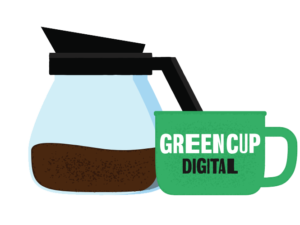People visit your website to solve their problem, find a solution, fill a need.
When you’re in the thick of business, it can be easy to design your website around features YOU want your user to take. However, if you’ve done any persona work, you should know by now your content needs to focus on helping your customers overcome a challenge or achieve THEIR goal.
To help, let’s take a step back and look at the simple question: why do people visiting websites?
To Make A Purchase
If you’re an eCommerce business, it may be as simple as your customers visiting to make a purchase. Your product or service is the solution for them! If this is the case, make sure your product(s) are segmented and easy for the user to find, compare, and buy.
Optimize your website for engagement, sometimes referred to as the consideration stage in the buying process. Engagement goals can range from how likely a user is to stay on our website, say reading blogs, or could be any action like downloading a checklist or making a purchase. Another common framework used to help with organic search is the see, think, do strategy. “See” allows your audience to find something that interests them or that they can relate to. “Think” is when your customer considers a purchase, and “Do” enables a conversion.
Assessing each of these stages can help you reduce friction, simplify your buying process, and, in the end, make more sales!
To Learn Something
Let’s put this one into perspective for you with some cold, hard data. There are approximately 5.6 billion Google searches per day, and 14% of them are questions. That’s 784,000,000 questions asked every day! EVERY! DAY! Can you help answer just one?
I like to refer to these numbers when business owners tell us they’re not interested in a blog because they don’t want to add to the “noise” or their market is saturated with content. People are online searching to learn something, whether that’s how long it takes to build a home or how to train their dog.
Creating blog posts, guides, ebooks, newsletters, videos, checklists, etc., will allow your client to learn something on your website. You’re creating value for your client, which can lead to trust in your business. By providing educational content around your product or service, you’ll quickly become a trusted authority in your industry.
To Find Information
There’s nothing worse than being told to check out this “new” pizza place, only to not find their location in your quick online search. Or want to grab your favorite seasonal beer and not find the brewery’s summer hours listed.
More often than not, customers are visiting your website to find a simple piece of information so that they can visit or contact you directly. Are you making that information easy to find?
Consider adding your phone number and email address to the header of your website. That way, when prospects land on your website, they can instantly ‘click to call’ from their mobile device. In the footer, be sure to list your hours, location, and reiterate your contact information. It can also be a good place to link your social media profiles. Often if your website is not up-to-date, users will retreat to social media in hopes of finding more current updates.
It’s also an excellent time to assess if any significant business changes have occurred, like implementing seasonal hours, temporary closures, or a new location opening. When changes like this happen, be sure you’re updating your directory listings. Not only do these listings help boost your SEO, but will ensure your contact information is consistent. If your new website isn’t ranking quite yet, chances are users will find your contact information on these sites – so make sure it’s up to date!
To Engage With Community
Last but not least, for those prospects who are now loyal customers, they’ll often return to your website in support of a greater community. We’ve talked about the benefits of building an online community before, and your website is often an overlooked opportunity to create further engagement.
From leaving reviews supporting your business to joining affiliate programs, create a space where your current customers can provide feedback and feel appreciated. You could also consider making a dedicated space just for existing customers with exclusive content. After all, delighting customers after purchase will continue to feed your cycle of attracting new ones!
Why Are People Visiting YOUR Website?
Have you asked yourself this question lately? As your business grows and evolves, it’s necessary to take a step back and ensure your website is continuing to serve your prospects and clients best. To help guide your content creation and customer experience, remember that your website is a resource – so make sure it’s acting as such!
With your website now serving your clients, consider taking the next step with our blog post: Three Ways To Increase Organic Search Traffic.





